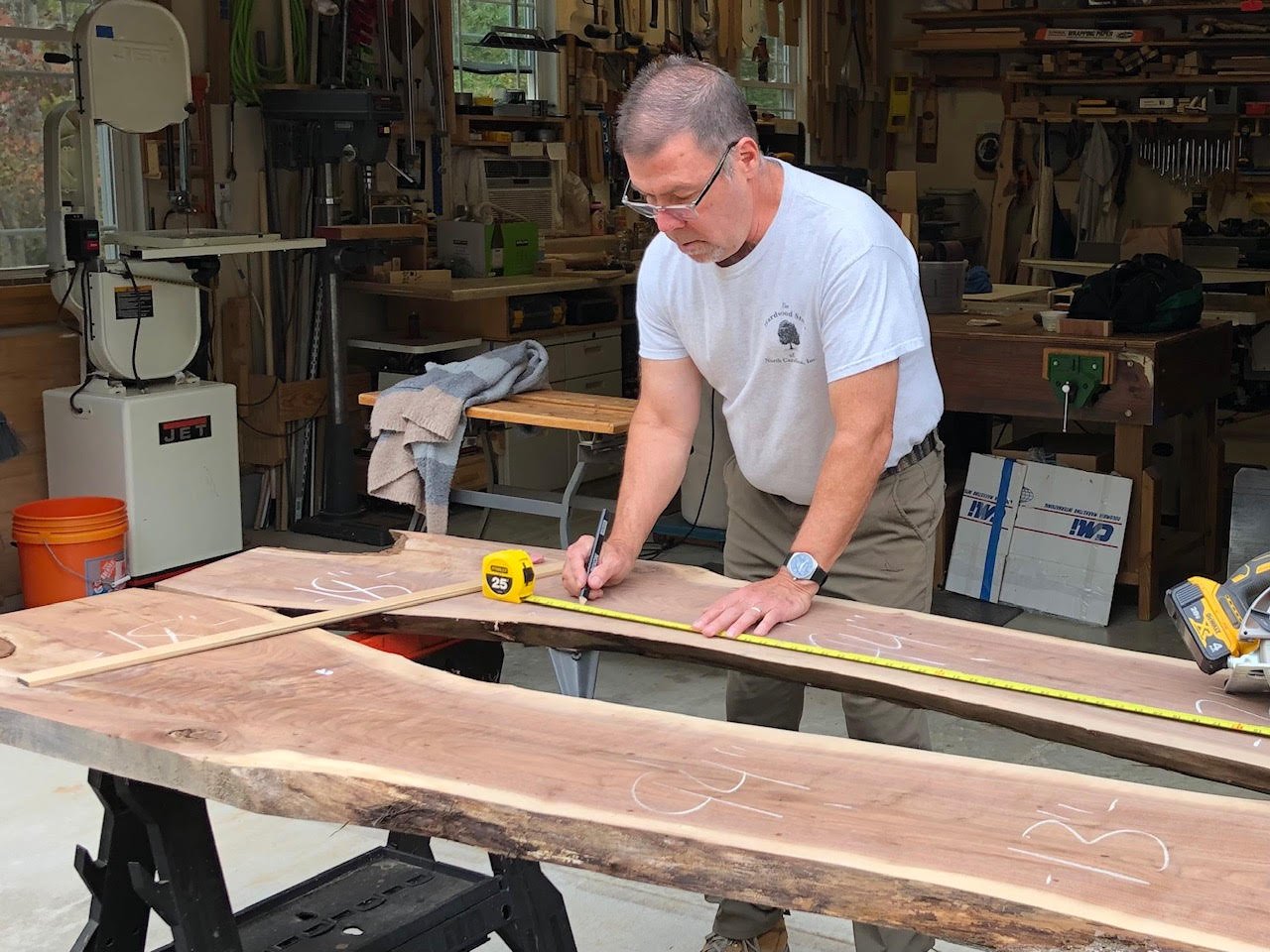Live Edge Woodworking
“Knowing trees, I understand the meaning of patience”. -Hal Borland
After 37 years of working a series of occupations; in science, business, and healthcare, I feel fortunate to have the liberty at this point in my life to pursue my vocation of woodworking. “Vocation”, comes from the Latin root, vocare, “to call”. This calling began early for me, in woodshop in Junior High. Working now in my shop, using tools that belonged to my father, almost 50 years after those first encounters with wood, I still am excited by the sight of the beautiful grain of a tabletop, that comes alive with the first coat of finish.
I specialize in projects that utilize “live edge” wood, that is wood that retains the natural edge of the tree from which it was cut. George Nakashima, one of the pioneers of the live edge school of woodworking, described the honor of working with a slab of wood from a magnificent tree, then giving it a ‘second life’ as a piece of beautiful, functional furniture. I rarely use stains, and I’ve resisted the recent trend of making tables from wood that has been cast into slabs of plastic resin. I want to see and feel the beauty of the wood. Finding a piece of wood cut from the point in the tree where the trunk divides into two limbs, where the grain is compressed and formed into a ‘flame’, that is a special privilege.
My customers ask me where the name Linetree comes from. Linetree is an old surveying term. Before there were paved roads, and modern improvements on the land, the corner of a property might be identified by a century old tree, a “linetree”. It was the point where adjoining properties come together. In this same way, Linetree Woodworking is the point where different elements come together; an exceptional piece of wood, the function of the piece I am making, and my experience as a woodworker.
Woodworking is a solitary occupation, and one that takes patience. It may take a week or more to make a single piece of furniture. The work on any of my pieces of furniture begins with finding the right slab of wood for the piece I am making. Almost all of my wood is kiln-dried hardwood. Over the years I have curated a list of a dozen reliable sawmills in North Carolina and Virginia. Visiting one of these sawmills, I will sort through dozens of slabs to find the one I will use for a customer’s table. The pieces of wood I select depend on where the
boards will be used. Wood for the bases of my tables needs to be especially straight, and free of knots and checks. For my tabletops, I look for wood with character; a strong contrast between the heartwood and sapwood, exceptional grain, the right blend of tones and color, and dense grain that will produce a good finish.
Decades of working and finishing wood have taught me how to use the qualities of the wood in choosing the sections I want in the finished piece. A single slab can have dramatic differences on its two faces. Sometimes I keep the bark on the piece, and sometimes I remove it. Markings from insects, such as those found in ambrosia maple, and the intricate, dark lines of “spalted” wood, often enhance the natural grain. All of these will influence the final appearance of the finished product.
The process of wood selection is only the first step in making a Linetree table. I may have the chance to describe some of the joinery techniques I use to make my pieces in future posts on the PGA blog. In the meantime, I invite you to visit the Pittsboro Gallery of Arts to see a sample of my work, and a range of beautiful work in many different art mediums.
Craig DeBussey





